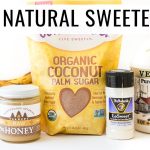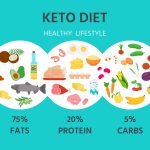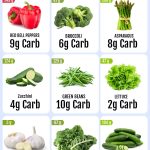Childhood is a time of rapid growth and development, making proper nutrition a critical component of ensuring your child’s well-being. Establishing healthy eating habits during these formative years not only supports physical growth but also lays the foundation for lifelong well-being. In this article, we’ll delve into the top 9 healthiest foods for kids, each offering a unique set of nutrients and benefits to help your child thrive.
1. Oatmeal
A wholesome breakfast sets the tone for the day, and oatmeal is an excellent choice. Oats are whole grains, providing a steady release of energy that keeps your child fueled and focused until their next meal. Additionally, oatmeal is a great source of dietary fiber, promoting healthy digestion and regular bowel movements.
Oatmeal can be a canvas for creativity. You can add fresh fruits, a drizzle of honey, or a sprinkle of cinnamon for extra flavor and nutrition. By starting the day with a balanced breakfast, you’re nurturing both their physical and mental development.
2. Greek Yogurt
Greek yogurt is a nutritional powerhouse that offers a blend of essential nutrients. It’s rich in protein, which supports growth and tissue repair, and probiotics that promote a healthy gut. A healthy gut contributes to a strong immune system and efficient digestion.
Moreover, Greek yogurt is incredibly versatile. It can be enjoyed on its own, mixed with fruits, or blended into smoothies, making it an ideal snack or a base for creative recipes.
3. Berries
Berries are a treasure trove of health benefits for kids. Strawberries, blueberries, and raspberries are packed with antioxidants, vitamins, and minerals. They support the immune system, help maintain healthy skin, and contribute to good vision.
Berries make an enticing snack on their own, but they can also be included in yogurt parfaits, oatmeal, or as a topping for whole-grain pancakes. The natural sweetness and vibrant colors of berries often make them a hit with kids.
4. Avocado
Avocado is a nutrient-dense food that provides healthy monounsaturated fats, dietary fiber, and a host of vitamins and minerals. These healthy fats support brain development, and the fiber keeps digestion regular. Plus, avocados are a source of vitamins C, K, and folate.
Avocado’s mild, creamy texture can be introduced to kids as a spread on whole-grain bread or incorporated into sandwiches, salads, or guacamole. It’s an ideal way to diversify their diet and provide essential nutrients.
5. Eggs
Eggs are a well-rounded source of high-quality protein and essential nutrients, making them a staple in a child’s diet. They are an excellent source of choline, a nutrient crucial for brain development and memory.
Eggs can be prepared in various ways: boiled, scrambled, poached, or in a hearty omelet with vegetables. This versatility allows you to tailor the preparation to your child’s preferences.
Raisins: Nature’s Sweet and Nutrient-Packed Treat for Your Health
6. Fish
Fatty fish, such as salmon, trout, and mackerel, are rich in omega-3 fatty acids, which play a crucial role in brain and eye development. Including fish in your child’s diet at least twice a week can contribute to their cognitive and visual development.
Preparing fish can be a delightful experience for the whole family. Grilled, baked, or pan-fried with a squeeze of lemon, fish can be a tasty and nutritious addition to your weekly menu.
7. Nuts and Seeds
Nuts and seeds are packed with nutrients such as healthy fats, protein, fiber, and a range of vitamins and minerals. Almonds, walnuts, and chia seeds are excellent options. They provide a satisfying crunch and can be a nutritious snack for your child.
While offering nuts and seeds, ensure they are age-appropriate and free from choking hazards. You can incorporate them into meals and snacks, such as adding a sprinkle of chia seeds to yogurt or giving your child a handful of mixed nuts as a mid-afternoon pick-me-up.
8. Lean Meats
Lean meats, including chicken and turkey, offer a valuable source of protein, which supports growth and muscle development. They also supply essential minerals like iron, which is important for carrying oxygen in the blood and supporting healthy brain function.
Grilled or roasted lean meats can be served as a main course or included in sandwiches, wraps, and salads. These options provide a good balance of nutrients while accommodating your child’s taste preferences.
9. Leafy Greens
Leafy greens like spinach, kale, and Swiss chard are nutrient powerhouses. They are rich in vitamins, minerals, and antioxidants, contributing to overall health. These greens are particularly high in vitamins A, C, and K, as well as calcium.
Incorporating leafy greens into your child’s diet can be easy and enjoyable. You can blend them into smoothies, sauté them as a side dish, or mix them into pasta sauces. By introducing a variety of greens, you encourage your child to explore different flavors and reap the nutritional benefits of these veggies.
FAQs:
Q1: How can I encourage my child to eat healthier foods?
A1: Engage your child in meal planning and preparation, and involve them in grocery shopping. Make mealtime enjoyable and stress-free by offering a variety of foods and being a positive role model in your eating habits.
Q2: Are there specific foods that kids should avoid?
A2: Limit your child’s consumption of sugary drinks, processed snacks, and foods high in added sugars and unhealthy fats. Also, monitor their caffeine intake and limit their exposure to fast food.
Q3: Should I give my child dietary supplements?
A3: A balanced and varied diet should provide most of the necessary nutrients. Consult your pediatrician before considering supplements to ensure they are necessary and safe for your child.
Q4: How can I handle a picky eater?
A4: Be patient and avoid pressuring your child to eat specific foods. Introduce new foods gradually, and create a positive mealtime environment to make trying new foods an enjoyable experience.
Q5: What are some healthy snack options for kids?
A5: Healthy snacks include apple slices with peanut butter, carrot sticks with hummus, yogurt with berries, and whole-grain crackers with cheese. These options provide a balance of nutrients and flavors for your child.
Conclusion
Providing your child with the right nutrition is an investment in their growth, development, and lifelong well-being. These nine healthiest foods for kids offer an array of nutrients, flavors, and textures that can make healthy eating an enjoyable and rewarding experience. By introducing these foods into your child’s diet and creating a positive mealtime environment, you’re setting the stage for a lifetime of good nutrition and a healthy relationship with food.









